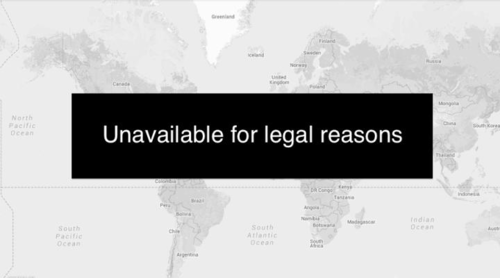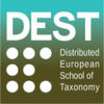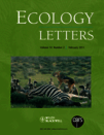FishBase on the US and CA servers (www.fishbase.us and www.fishbase.ca) are now updated to version April 2015.

BiodivERsA3 has officially launched its 2015 pan-European joint call for research proposals. The call, co-funded by the European Commission, will focus on understanding and managing the biodiversity dynamics to improve ecosystem services and functioning.
BiodivERsA is a network of 29 research-funding agencies across 18 European countries. It is an ERA-NEt Co-fund, funded under the EU’s Horizon 2020 Framework Programme for Research and Innovation. BiodivERsA works to coordinate national research programmes on biodiversity across Europe and to organize international funding for research projects in this field.
The complete announcement on this call, including details on the topics, is listed here.
Scientific teams are invited to form international consortia comprising research groups from at least three countries participating in the BiodivERsA call. The complete list of participating countries can be found here.
The deadline for submission of pre-proposals (mandatory) is set on Monday 20 July 2015, 17:00 GMT +1:00. More information on the time schedule can be found here.
The 4th edition of the DEST course ‘BASICS of TAXONOMY’ will take place from 5 to16 October 2015 at the Sven Lovén Centre for Marine Sciences, Kristineberg, Sweden.
Taught by renowned experts in their field, the course topics are:
- DELTA
- Digital drawing
- Scientific illustration
- Scientific writing and communication
- Scratchpads, a tool to build, publish and share information on the web
Target audience: MSc students, PhD students, early career researchers
Thanks to funding of the Royal Swedish Academy of Sciences, this 2-weeks course is offered at a discounted rate of 550 EUR.
Fee includes accommodation and meals.
XML markup of taxonomic research and specimen data is a valuable tool for structuring the incessantly accumulating biodiversity knowledge. It allows for the opportunity to collectively use the currently fragmented information for more detailed analysis.
A new research paper, published in theBiodiversity Data Journal, demonstrates how XML markup using GoldenGATE can address the challenges presented by unstructured legacy data, like those presented in the widely used PDF format. The paper demonstrates how structured primary biodiversity data can be extracted from such legacy sources and aggregated with and jointly queried with data from other Darwin Core-compatible sources, to present a visualization of these data that can communicate key information contained in biodiversity literature.
Specimen data in taxonomic literature are among the highest quality primary biodiversity data. Innovative cybertaxonomic journals such as the Biodiversity Data Journal are using workflows that preserve the data's structure and semantic specificity and disseminate electronic content to aggregators and other users that makes these data reusable.
Such structure however is lost in traditional taxonomic publishing and currently, access to that resource is cumbersome, especially for non-specialist data consumers.
The question is: how do you manage this vast distributed repository of knowledge about biodiversity to make it easily available reusable for future research?
To answer this challenge this project queried XML structured articles published in Biodiversity Data Journal along with historical taxonomic literature marked up using GoldenGATE, and represents the results as a series of standard charts. XML structured documents are maintained by the Swiss NGO Plazi and are freely available online.
In such form, data associated with specimens becomes much more valuable as it can reveal key information about a particular species, and even about the scientists who investigate them. Charts indicate at a glance, for example, what time of year and elevation range a species is likely to be found at, useful information if you want to search for it in the field.
Our accumulated biodiversity knowledge includes an estimated 2-3 billion specimens in natural history collections and 500 million pages of printed text. These are the data we need to answer questions that are relevant to our world today, like setting conservation priorities and anticipating the effects of climate change on biodiversity and ecosystem functions that affect the lives of people.
"In short, we have half a billion pages worth of biodiversity knowledge and are just learning how to query it. The real power comes when data from many articles are combined, queried, and reused for new purposes. Potential applications span the scientific, policy, and public spheres. When we all have better access to the information that already exists in the global corpus of biodiversity literature, this helps us do a better job of exploring what we don't know and wisely applying what we do." explains the lead author Dr Jeremy Miller, Naturalis Biodiversity Center.
###
This project was supported by pro-iBiosphere and EU BON, two FP-7 (European Union Seventh Framework Programme, 2007-2013) grants (No 312848 and 308454).
Original source:
Miller J, Agosti D, Penev L, Sautter G, Georgiev T, Catapano T, Patterson D, King D, Pereira S, Vos R, Sierra S (2015) Integrating and visualizing primary data from prospective and legacy taxonomic literature. Biodiversity Data Journal 3: e5063. doi: 10.3897/BDJ.3.e5063
EU BON is happy to announce a new addition to our growing family of associated partners. In April 2015, the project has signed a Memorandum of Understanding with the German Federation for Biological Data (GFBio).
GFBio is a project that brings together national key players providing environmentally related biological data and services to develop the ‘German Federation for Biological Data' . The overall goal is to provide a sustainable, service oriented, national data infrastructure facilitating data sharing and stimulating data intensive science in the fields of biological and environmental research.

The federation will build on proven data archiving infrastructures and workflows such as those of PANGAEA for environmental data and the resources of Germany's major natural history collection data repositories. The new infrastructure will improve and integrate these existing components within a common technological and organizational framework.
The Swedish University of Agricultural Sciences offers a new position for Postdoctoral researcher in ecology: Spatial population dynamics at a species’ northern range margin at the Department of Ecology.
The department conducts empirical and theoretical research for sustainable forest and agricultural production and efficient biological conservation. Research on populations, communities, and ecosystems forms the foundation for studying the influence of land use and climate on animals, plants, soils nutrient status, and greenhouse gas balances. Solutions are sought that will mitigate climate change, preserve threatened species, benefit biological diversity and ecosystem services, and control pests in forest and agricultural landscapes as well as in urban areas.
Duties: The postdoc researcher will study spatial population dynamics in an insect at the northern margin of its global distribution, by taking advantage of a data from a long-term study of the butterfly Pyrgus armoricanus. The main purpose of the project is to understand how climate, habitat fragmentation and habitat quality influence the regional distribution and population dynamics of this butterfly, and to use this knowledge to predict population persistence and distribution in an altered climate and after changed land use. The successful candidate wull also analyze time-series data on population dynamics in relation to weather and habitat quality. There will also be opportunities to model future regional distribution or population persistence under scenarios of future land use and climate change.
Place of work: Uppsala
Form of employment: Temporary employment, 1 year.
Deadlines: June 1, 2015
For more information on requirements and how to apply, lease visit the official job offer page: http://www.slu.se/sv/om-slu/fristaende-sidor/aktuellt/lediga-tjanster/las-mer/?eng=1&Pid=1875
A new aticle published in Ecology Letters looks into the indirect interactions among tropical tree species through shared rodent seed predators. The reasearch is part of the work of EU BON postdoc Carol X. Garzon-Lopez.
Abstract: The coexistence of numerous tree species in tropical forests is commonly explained by negative dependence of recruitment on the conspecific seed and tree density due to specialist natural enemies that attack seeds and seedlings (‘Janzen–Connell’ effects). Less known is whether guilds of shared seed predators can induce a negative dependence of recruitment on the density of different species of the same plant functional group. We studied 54 plots in tropical forest on Barro Colorado Island, Panama, with contrasting mature tree densities of three coexisting large seeded tree species with shared seed predators. Levels of seed predation were far better explained by incorporating seed densities of all three focal species than by conspecific seed density alone. Both positive and negative density dependencies were observed for different species combinations. Thus, indirect interactions via shared seed predators can either promote or reduce the coexistence of different plant functional groups in tropical forest.
Carol X. Garzon-Lopez et. al. (2015) Indirect interactions among tropical tree species through shared rodent seed predators: a novel mechanism of tree species coexistence. Ecology Letters. doi: 10.1111/ele.12452
A team representing the EU BON project travelled to the Joint Research Centre (Ispra, Italy) on 23-24 April 2015 to meet with representatives of various JRC Units dealing with biodiversity.
Working in close collaboration with policy Directorate-General, the JRC’s mission is to provide EU policies with independent, evidence-based scientific and technical support, throughout the whole policy cycle. Gregoire Dubois (JRC), who seats the Advisory board of the EU BON project, chaired the two-day meeting intended to establish concrete links between EU BON and JRC.

The objectives of the meeting were hence to become familiar with JRC’s biodiversity work, present the EU BON project to JRC, and above all identify overlapping interests, so as to develop cooperation between the EU BON project and JRC. Stimulated by a number of presentations from both sides, long discussions took place, mainly centred around how can JRC and EU BON work together to ensure the long-term presence of EU BON and its products.
The ASEAN Centre for Biodiversity (ACB) publishes a monthly newsletter to keep stakeholders informed of news about biodiversity concerns and efforts that are relevant to the ASEAN region, including about the work of ACB.
In their latest issue they feature articles about:
- ASEAN-Japan cooperation on nature parks management
- Phl hosts international conservation financing conference
- ACB briefs German researchers on coastal ecosystem management
And many more news, features and updates. To read the newsletter, please go to: http://e-news.aseanbiodiversity.org/acb_eweb_mar15/#phl
The ASEAN Centre for Biodiversity (ACB) is an intergovernmental regional centre of excellence that facilitates cooperation and coordination among the members of ASEAN, and with relevant governments and organizations on the conservation and sustainable use of biological diversity. Protecting Southeast Asia’s rich but highly threatened web of life is its main goal.
GEO BON announces the launch of their newly designed webpage located at the same address: www.geobon.org
The site’s home page welcomes visitors with a clean uncluttered design with featured content focused on GEO BON's to improve the acquisition, coordination and delivery of biodiversity information and services to users, particularly decision-makers, achieved through easier navigation to content, applications and products, but also for the site to serve as a data portal in future.
Go and explore if you haven't done so: www.geobon.org
The University of Cambridge invites for applications for a Research Associate to work on EU-BON, a major EU-funded research project, seeking to improve the use of biodiversity data in public policy. EU-BON will carry out research towards building a European gateway for biodiversity information, which will integrate a wide range of biodiversity data from on ground observations to remote sensing datasets and make it accessible for scientists, policy makers, and the public. The project is coordinated from the Berlin Natural History Museum with the University of Cambridge contribution being led Professor William Sutherland (Department of Zoology) and Dr Robert Doubleday (Centre for Science and Policy and Department of Geography). EU-BON started on 1 December 2012 and runs for 4.5 years.
The post The researcher will carry out research on how biodiversity data is currently used in European policy making and will contribute to analysis of the opportunities to increase its effective provision and use. Research methods are likely to combine qualitative and quantitative analysis and to focus on the use of biodiversity data in public policy contexts. The researcher will be expected to spend time working in both the Department of Zoology and the Centre for Science and Policy.
In addition to carrying out research on the use of biodiversity data in European policy making, the researcher will support Cambridge's contribution to EU BON as a whole. This will involve contributing to other workpackages as and when required. More information about EU BON can be found here:http://www.eubon.eu
Person Specification Applicants should have a PhD in a relevant field. Experience in both qualitative and quantitative analysis is desirable. Applicants should ideally have some first-hand experience of public policy processes and a willingness to travel within the European Union for research. Excellent organisational and communication skills will be essential in working as a successful part of this large, multi-partner and multinational team.
Any enquiries concerning the position can be made to Dr Robert Doubleday,rob.doubleday@csap.cam.ac.uk or Professor William Sutherland, w.sutherland@zoo.cam.ac.uk
Interviews for this post will take place on Thursday 18th June 2015.
To apply and for more information, please go to teh official job offer.
Reporting under policy instruments to inform on the trends in biodiversity requires information from a range of different elements of biodiversity, from genetically viable populations to the structure of ecosystems. A new research looks into the Essential Biodiversity Variables as an analytic framework to identify ways in which gaps between biodiversity data and policy reporting needs could be bridged. The study was published in theJournal of Applied Ecology.
The Essential Biodiversity Variables (EBVs, Pereira et al. 2013) which were previously developed by ecology experts in GEO BON, is as a list of the most essential elements that need to be monitored worldwide, if we want to know how biodiversity is really changing.Example of essential variables is the population abundances of species (like the Living Plant Index from the WWF) or the extent of habitat fragmentation.
In the recently published study, funded by the EU FP7 project EU BON, scientists used the identified EBVs as a framework to analyse the gaps between the biodiversity objectives stated in international policy instruments, the indicators used to develop the related policy reports and the data that is actually available to quantify indicators and proxies.
Results of the recently published study show:
1) which aspects of biodiversity are being asked for the reporting on policy instruments. Based on this knowledge,it became apparent which aspects of biodiversity are not often asked to be in these reports and thus for which aspects policy makers are unlikely to receive information. For example information on the changes in the EBV class "Genetic Composition", was not often asked in reports, not often used in indicators and little data is directly available.
2) which of these biodiversity aspects actually end up being in the CBD reports, because scientists were able to quantify indicators. For instance, information for Ecosystem function is often asked for, but is not represented by many indicators.
3) for some EBVs data seems available to improve current reporting efforts, for instance for indicators on Ecosystem structure.
Additionally, the study identified which potentially available data could be used to improve existing indicators by adding more taxa or spatial or temporal coverage. This analysis also showed that the EBVs will not cover all the information asked in policy reporting. This is because the policy objectives also include things related to awareness raising of the public and the implementation of protection measures - aspects which are not within the scope of EBVs.
"Analytical properties, such as an identification of which data and indicators are relevant per EBV, will need to be addressed before EBVs can actually become operational and facilitate the integration of data flows for monitoring and reporting." commented the lead author of the study Dr. Ilse Geijzendorffer.
###
Original Source:
Geijzendorffer, I.R., Regan, E.C., Pereira, H. M., Brotons, L., Brummitt, N., Gavish, Y., Haase, P., Martin, C.S., Mihoub, J.-B., Secades, C., Schmeller, D.S., Stoll, S., Wetzel, F. T., & Walters, M.,Journal of Applied Ecology http://onlinelibrary.
Additional information:
Pereira, H.M., Ferrier, S., Walters, M., Geller, G.N., Jongman, R.H.G., Scholes, R.J. M. W. Bruford, Brummitt, N. , Butchart, S.H.M., Cardoso, A.C., Coops, N.C., Dulloo, E., Faith, D.P., Freyhof, J., Gregory, R.D., Heip, C., Höft, R., Hurtt, G., Jetz, W., Karp, D.S., McGeoch, M.A., Obura, D., Onoda, Y., Pettorelli, N., Reyers, B., Sayre, R., Scharlemann, J. P. W., Stuart, S.N., Turak, E., Walpole, M., & Wegmann, M. (2013) Essential biodiversity variables. Science, 339, 277-278.
The European Environment Agency has published its flagship report, the European Environment - State and Outlook 2015 (SOER 2015) .
It contains excellent online resources with detailed information, including downloadable graphs, tables and images. The report is compiled every five years and includes an assessment of trends and prospects, information on individual countries and regions, cross-country comparisons and the global context.
Aggregated level information on climate change, impacts, vulnerability and adaptation is included.
Read more and find the report online here: http://www.eea.europa.eu/soer
EU BON and CETAF informatics groups had an astronomically successful meeting at Digitarium in Joensuu, Finland, 17-20 March 2015. The event coincided with solar eclipse and show of the decade for northern lights.
Major progress in data standards for information exchange took place during the week when the Biodiversity Information Standards TDWG organisation announced ratification of five new terms for quantitative biodiversity data, which had been proposed by the EU BON project one year earlier. The new terms include, in particular, organismQuantity and sampleSizeValue. This allows for exchange of ecological data in much wider scale than what has been possible until now. The participants of the meeting applauded for this occasion.

Northern lights over Joensuu Science Park 2015-03-18. Photo: Riitta Tegelberg
The meeting included a training workshop on new data sharing tools, and working sessions for designing the EU BON portal, which will allow using biodiversity observation data in research.
The 40 attendees came from 18 different countries.

Participants at the meeting.
During the meeting the attendees also were given presentations and demonstrations of Digitarium's equipment and methods for high-performance digitisation.
New research published with the support of the FP7 large-scale bioinformatics project Building the European Biodiversity Observation Network (EU BON) and the Alien Challenge COST action reveals the importance of open data in the study and control of invasive alien species. The study was published online in open access in the journal Management of Biological Invasions.
Invasive alien species cause a wide variety of problems, including issues related to conservation; to human and animal health; to agriculture and to fisheries management. But how can science be useful to manage such potential issues?
"To advise policy makers and inform land managers on the dangers posed by and how to fight alien species we need to understand the invasion process. Ideally, we would like to be able to predict the causes, routes and progression of invasions." explains Dr. Quentin Groom, Botanic Garden Meise, Belgium.
Recently, several research groups have pioneered the process of "Horizon Scanning" for new alien species, also there have been parallel developments in the creation of dynamic ecological models to predict invasions. However, the greatest limitation to these advances is the lack of suitable data.
"The problem of invasive species is international and rapidly changing. Data are required from an extensive area, for many species and for a long period but what is currently available is patchy and often inaccessible. We argue for the importance of open data to tackle the problem of invasive alien species." explains Dr. Groom.
This new research reviews why access to data are so important to invasive alien species research and gives an overview of the reasons why data are unavailable to researchers. Currently access to data is patchy and is restricted in many ways:
- Legally, the use of restrictive data licensing blocks its use.
- Technically, many software systems don't adequately support sharing, particularly in their provision of unique identifiers.
- Culturally, data secrecy is the default position for most organizations.

Currently invasive species data is patchy and often restricted legally, through the use of restrictive data licensing. Credit: Peter Desmet
Gradually, data are becoming more accessible and attitudes towards data access are changing. The advent of data publications allows researchers to attract citations from their data, while simultaneously making their data accessible and discoverable.
The community of biodiversity observers is highly fragmented and the creation of a European biodiversity network will improve communication so that grassroots biodiversity surveyors will understand issues of data sharing, citation and licensing that are so critical for a rapid response to invasive species.
###
Original Source:
Groom QJ, Desmet P, Vanderhoeven S & Adriaens T (2015) The importance of open data for invasive alien species research, policy and management. Management of Biological Invasions 6: in press. doi: 10.3391/mbi.2015.6.2.02
FishBase on the US and CA servers (www.fishbase.us and www.fishbase.us) are now updated to version February 2015.
The domain www.sealifebase.org is now served with load balancing between the two mirrors below.
- sealifebase.ca (UBC, Vancouver)
- sealifebase.de (Geomar, Kiel)
You will see which mirror is serving at the bottom left corner of the page.
The DE domain is recently acquired.
 FB and SLB logos
FB and SLB logos




 RSS news
RSS news








 FB_SLB_logos copy.jpg
FB_SLB_logos copy.jpg
